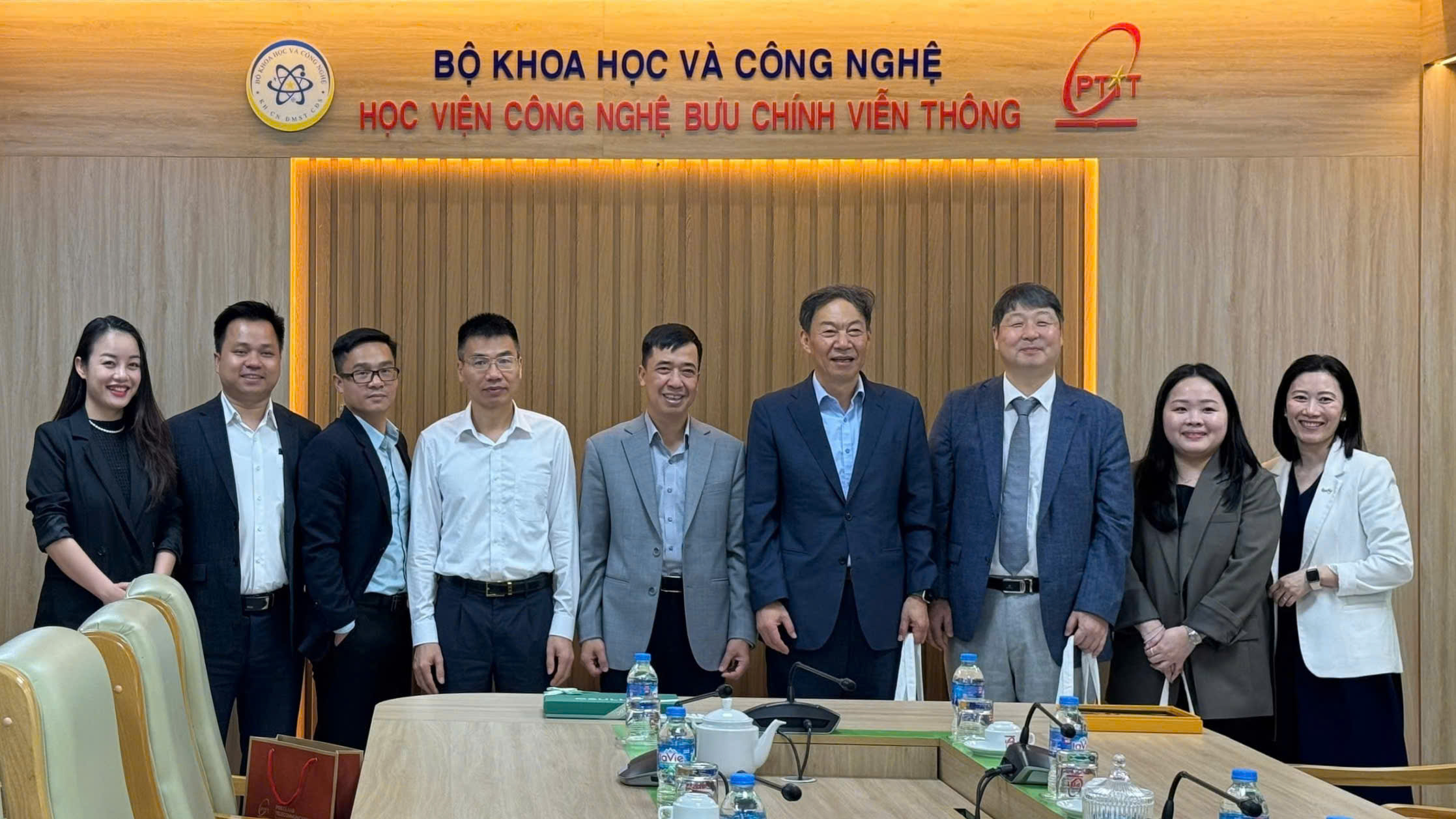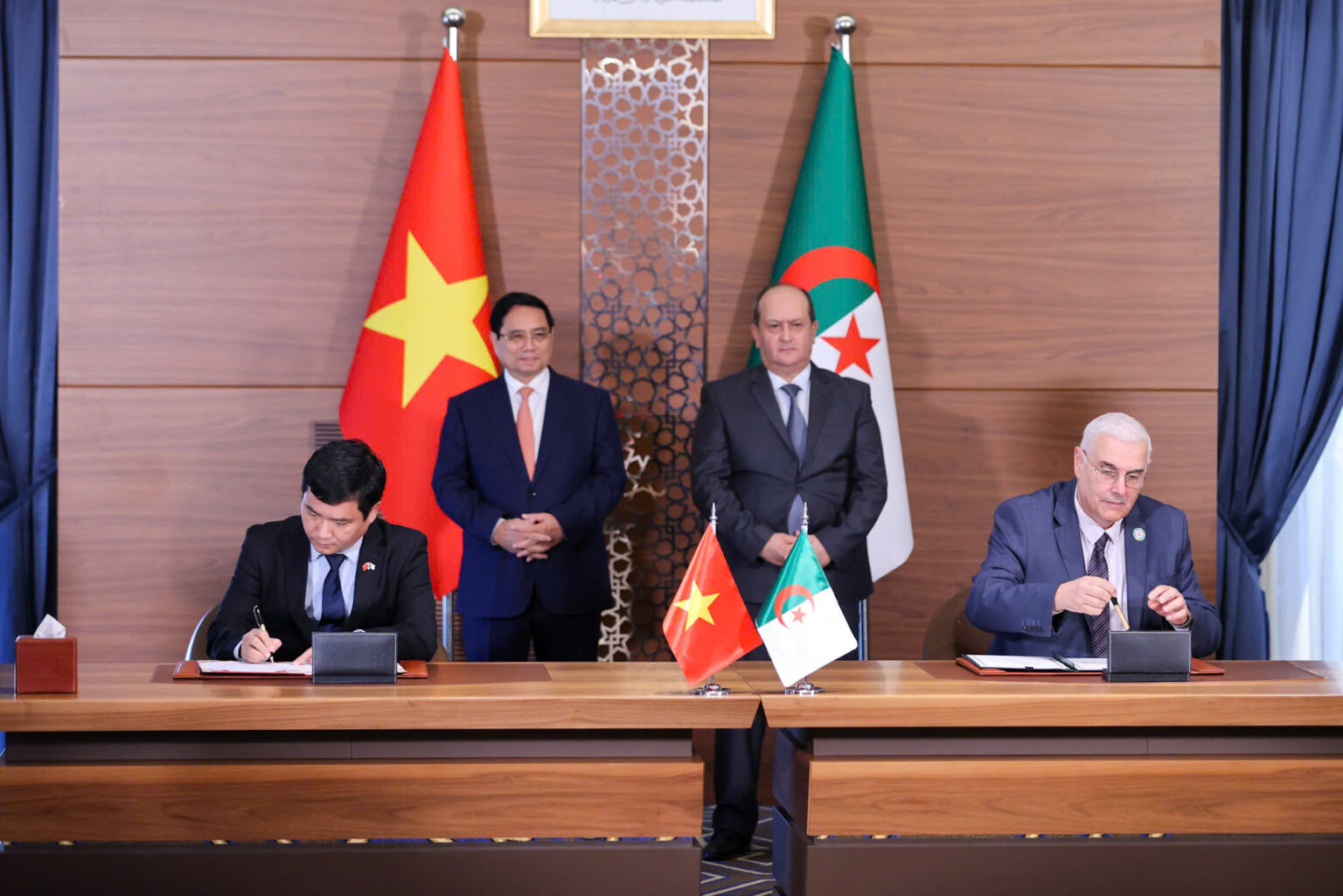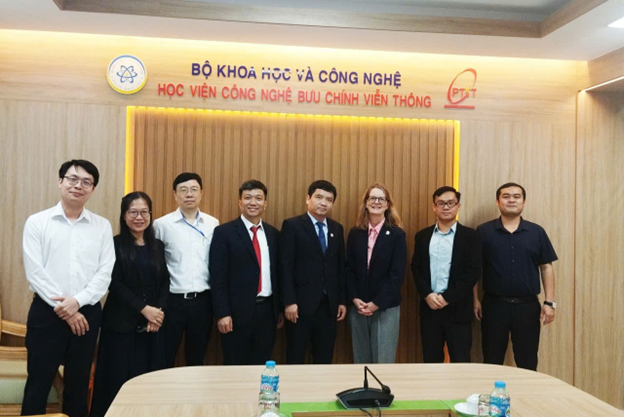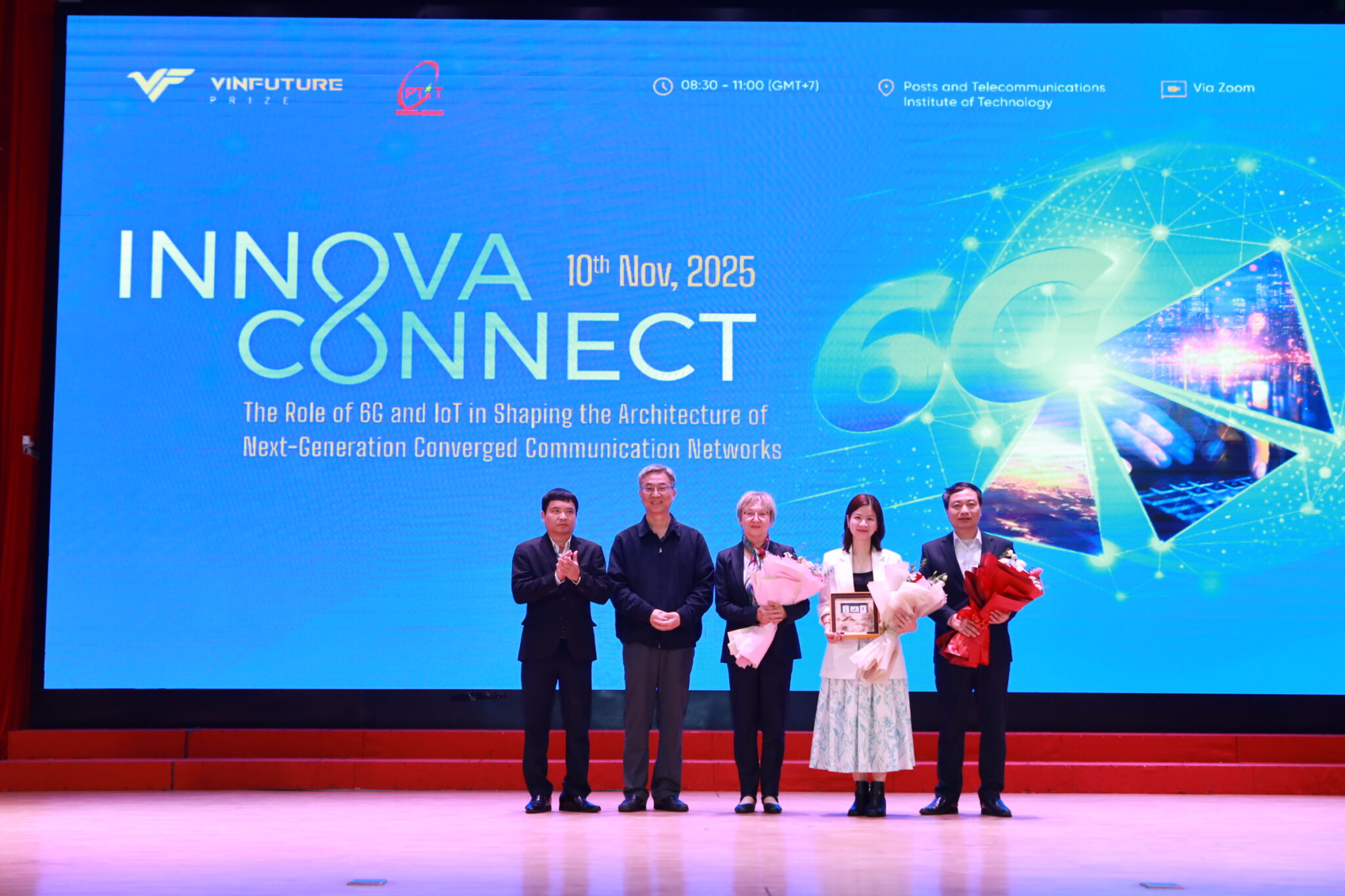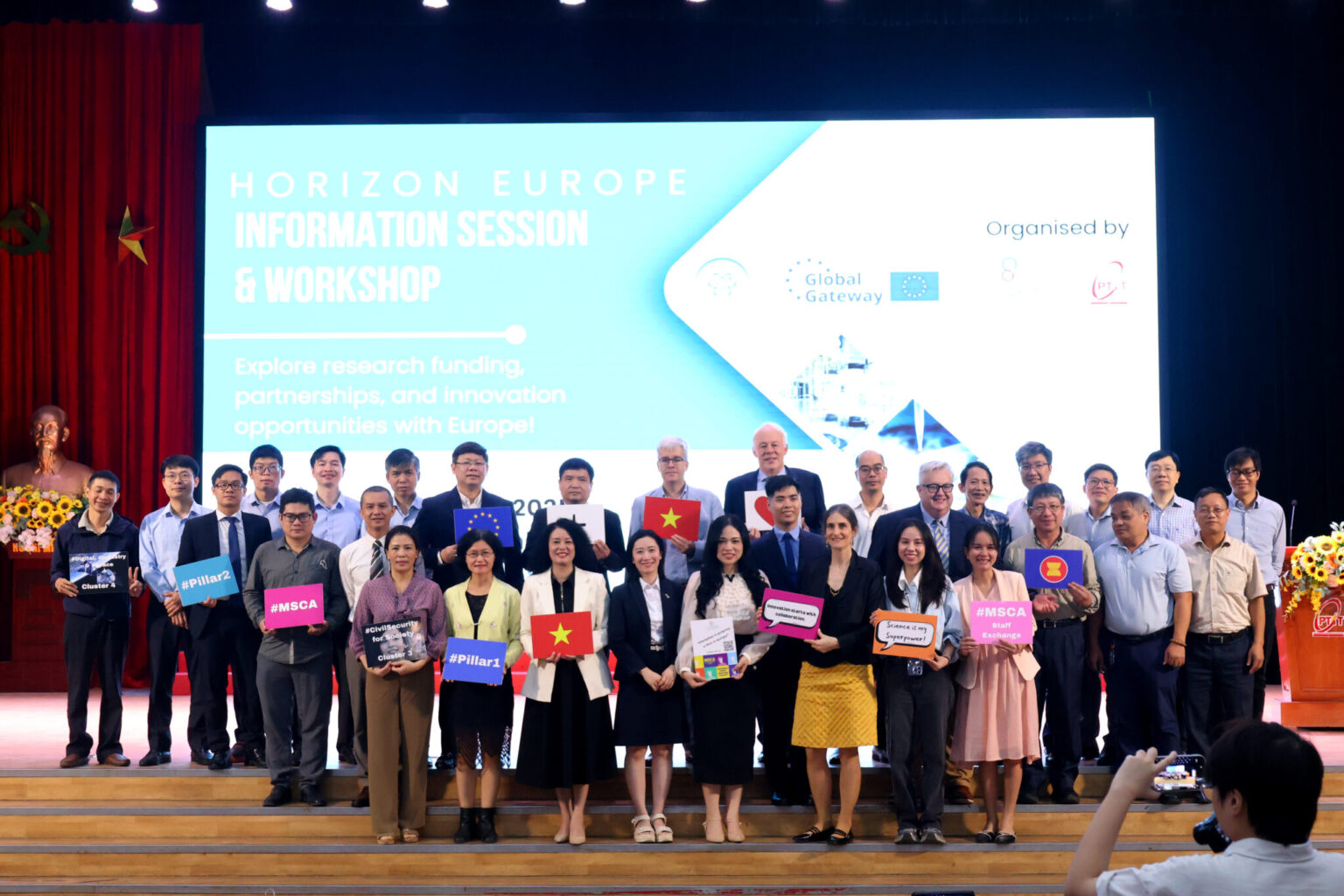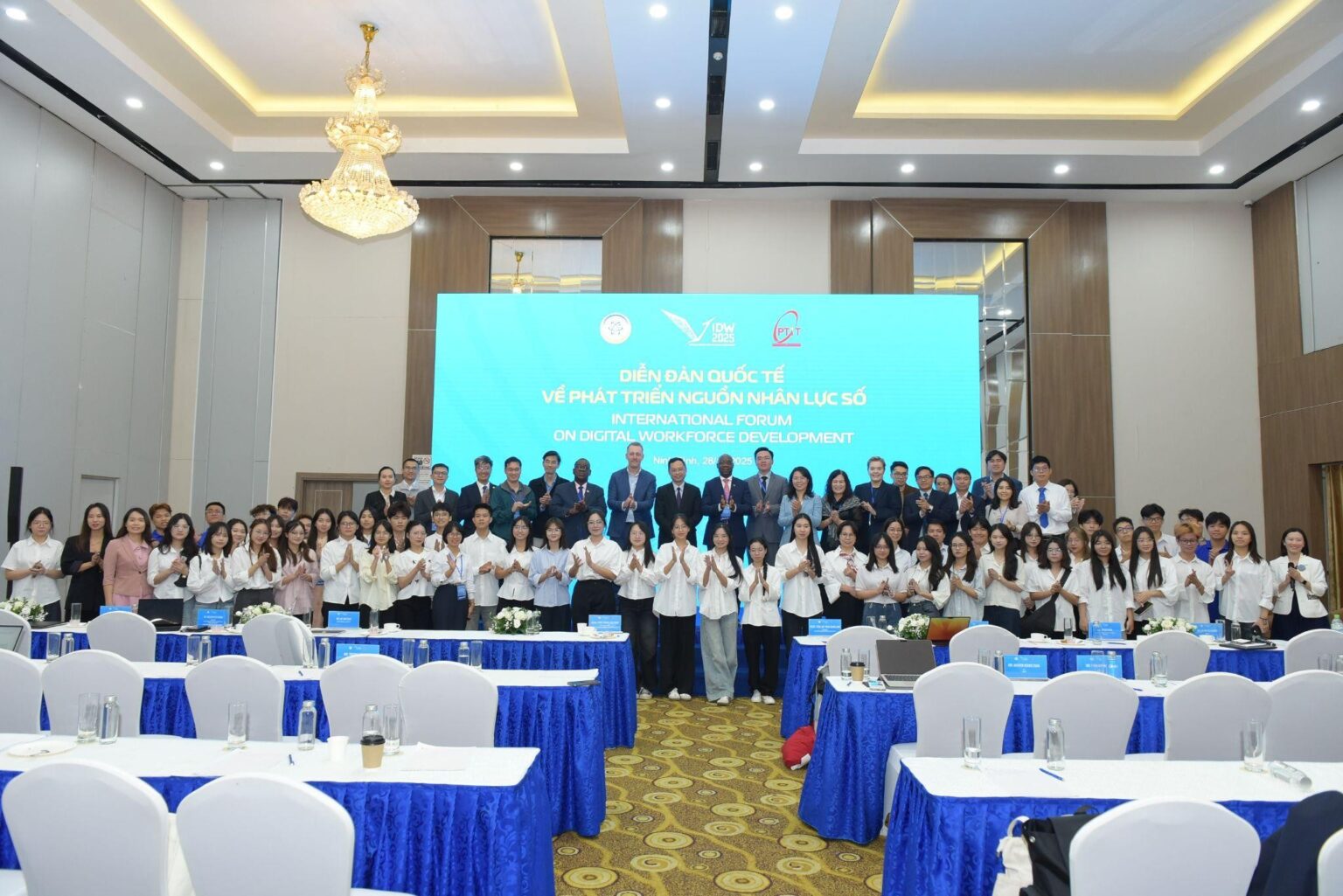On May 30, 2025, at PTIT Hanoi Campus, the Minister of Science and Technology Nguyen Manh Hung and the Ministry’s delegation visited and worked with the Posts and Telecommunications Institute of Technology (PTIT). At the working session with PTIT, the Minister noted that PTIT should put more focuses on domestic and international cooperation activities with enterprises, research organizations… to enhance PTIT’s position.
Before the meeting with key officials of the PTIT, the Minister’s delegation visited a number of facilities such as the Australia – Vietnam Strategic Technology Center, some laboratories… The Minister also directly discussed and answered a number of questions from students and technology startups about difficulties in starting a business and about policies to support enterprises. At the meeting, Minister Nguyen Manh Hung answered recommendations, removed difficulties and suggested many directions for PTIT
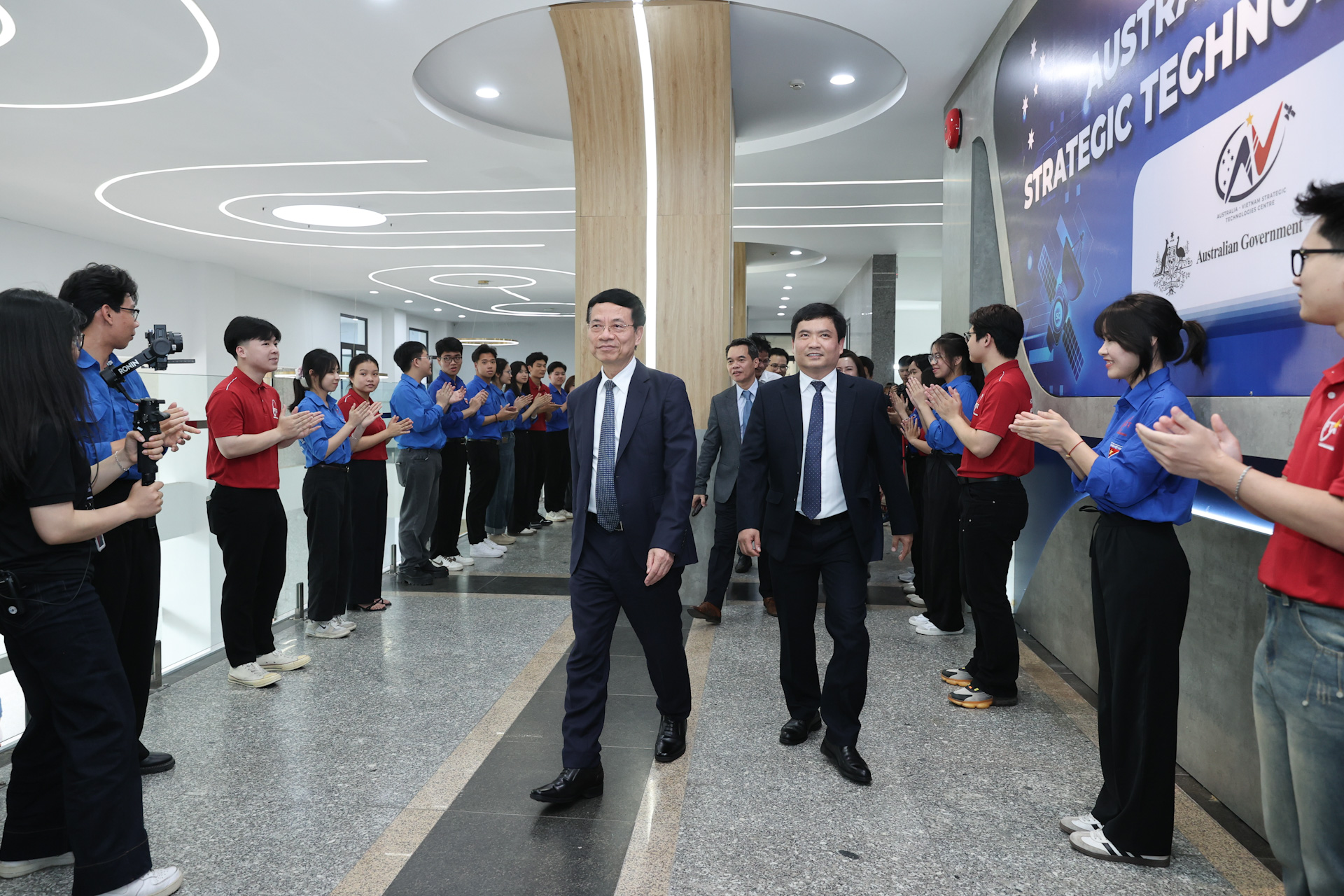

According to the report of PTIT’s President, Assoc. Prof. Dr. Dang Hoai Bac, PTIT is one of the five universities in semiconductor training and one of the five national key universities in engineering and technology. PTIT has social appeal in the fields of computers, IT, engineering, technology, economics – management, journalism and multimedia communications…and technology-hybridized programs for non-technical fields. PTIT is a pioneer in opening training programs in multimedia technology, information security, fintech, digital journalism, AIoT technology… and is the first university to have a faculty of Artificial Intelligence (AI), a faculty of Multimedia. The AI training program is ranked 98th in Asia, and 486th in the world according to the CSRankings.org rankings – a prestigious ranking of training institutions in the world. PTIT’s student population is more than 25,000 with 50 majors/training programs, expected to reach 30,000 students by 2027. By 2030, it is expected to reach 40,000 – 45,000 students. PTIT is a pioneer in digital transformation when it has built a digital university architecture model (2021), a digital university technology map (2023). Management activities and student support services are carried out on a mobile application with a “one-touch point”.

The President of PTIT also shared that in 2024, PTIT had 512 scientific articles published, expected to increase by 30% in 2025 and commented on the policy of rewarding the best international published articles. However, he admitted that the weakness is that applied technology from PTIT has not appeared much. At the meeting, one of the contents mentioned a lot was calling for funding for research, commercializing results as well as bringing potential products to the world.
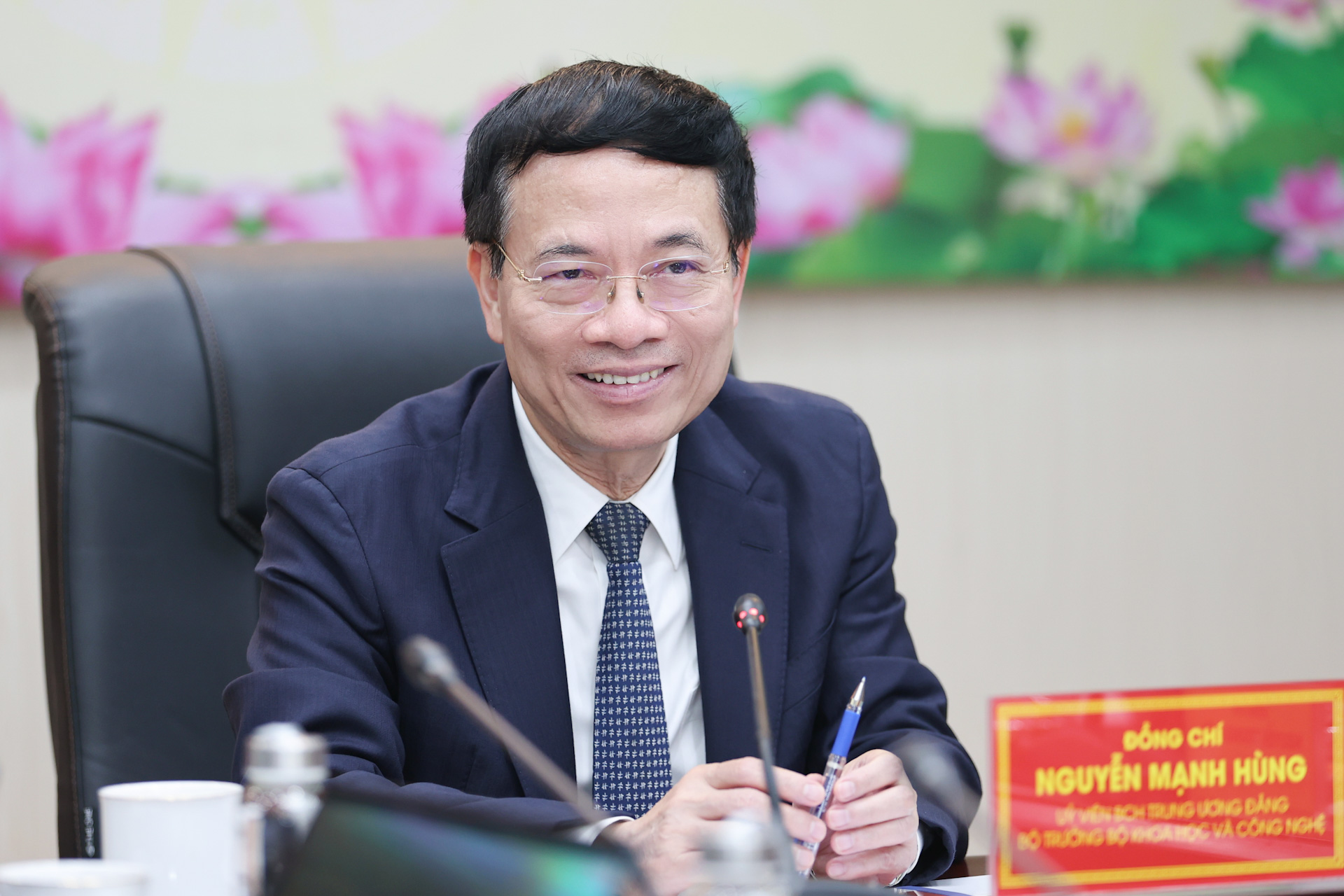
Sharing the above concerns, Minister Nguyen Manh Hung affirmed that the Law on Science, Technology and Innovation, expected to be passed in June, will change this situation. In addition to establishing investment funds for science and technology, one of the innovations of the Law is that the evaluation of investment results will be based on output results instead of input management, and also on the impact of research on the economy. For startups that are nurtured in academia, have dreams of reaching the world but are facing difficulties in capital, the Minister said that in the coming time, there will be mechanisms to form venture capital funds for startups and the amount of money poured into this sector will increase sharply. However, from the successful examples of Vietnamese businesses reaching out to the world, he also advised projects not to be afraid of difficulties, because “one of the great assets they have is hunger”. To increase the commercialization potential of research results, the Minister suggested that PTIT should pay more attention to research based on market requirements, prioritizing topics with accompanying businesses because those may be the most practical studies. In addition, he also suggested learning from foreign models by strengthening the team in charge of commercialization – those who help connect researchers and the market. With the responsibility of science, technology, innovation and digital transformation in the development of the country, the Minister said that the solution for PTIT is “cooperation”. He assessed that PTIT has done well in international cooperation in training, but needs to promote more cooperation in research, and can even hire research units from abroad to do major research with Vietnam.
PTIT used to be a unit under the Ministry of Information and Communications and transferred to the Ministry of Science and Technology after the merger. The Minister suggested that PTIT reposition its strategic tasks, and at the same time take advantage of combining science and technology with Digital Transformation.
“The research process is a trial and error process, costly and time-consuming. But doing it in a digital environment will be faster and less costly. The digital environment is a new land for science and technology to develop faster and more effectively,” said the Minister.
In addition, with the advantage of the foundation of the Ministry of Science and Technology, participating in a field with great impact, the Minister suggested that PTIT must find its strengths and rise to the number one position.
“The country is now completely different with many important innovations. The Ministry is also different. This is a good environment for PTIT to make a breakthrough in the next 5 years, to a different level and ranking,” said the Minister.
Responding to the Minister’s sharing, PTIT’s President Dang Hoai Bac said that with its current strengths, PTIT “feels confident” to achieve the position expected by the Minister. He pledged to take on the difficult and large tasks of the Science and Technology sector, and in the next 5 years will develop more strongly, reaching out to the world.
